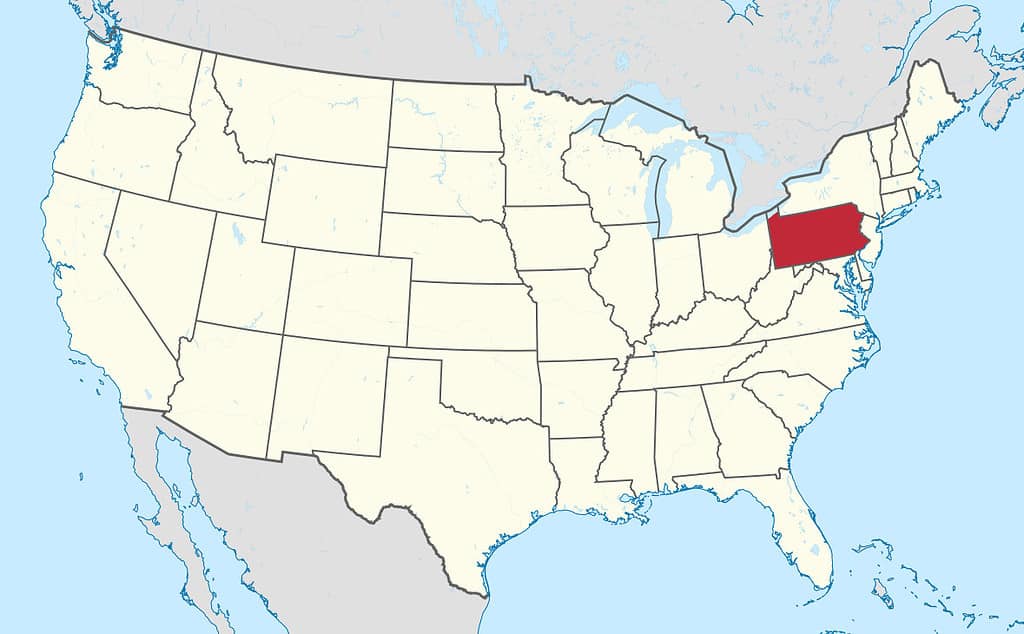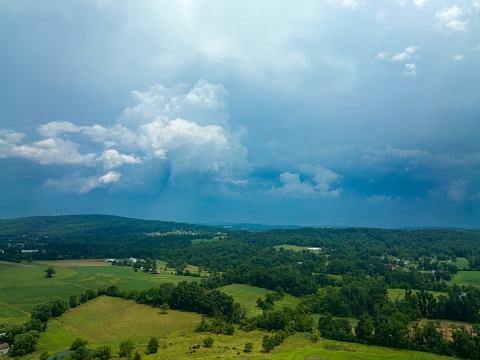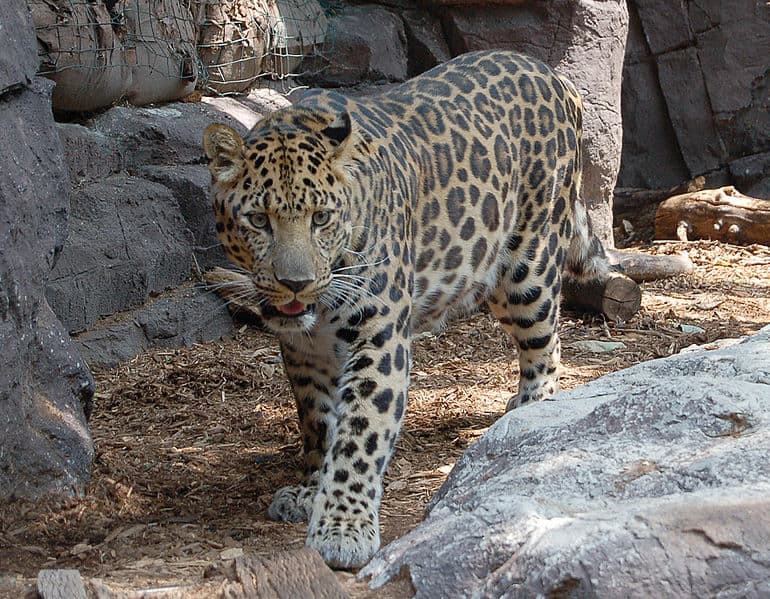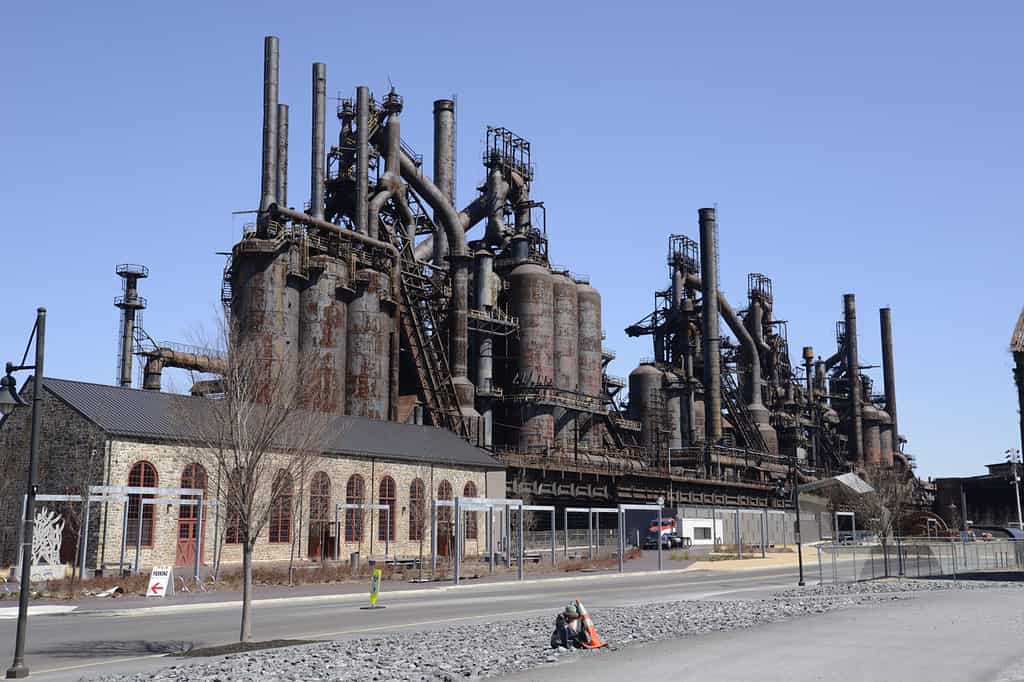Pennsylvania, known as the Keystone State, is a state with historical significance, natural beauty, and diverse geography. In this article, we explore the history, geography and size of Pennsylvania.

Pennsylvania lies in the northeast region of the United States.
©TUBS / CC BY-SA 3.0 – License
History of Pennsylvania
Pennsylvania’s history involves Native American civilizations, European exploration, and the birth of the United States. The region’s pre-European history shows presence of various Indigenous peoples, including the Lenape, who inhabited the Delaware Valley, and the Susquehannock, who lived in the central and northern parts of what is now Pennsylvania. These Native American communities had established vibrant societies, with distinct cultures, languages, and trading networks, long before the arrival of European settlers.
The founding of Pennsylvania by William Penn in 1681 marked a significant turning point in the region’s history. Penn, a Quaker, got a charter from King Charles II of England to establish a colony that would serve as a haven for religious tolerance and peaceful coexistence. Philadelphia, which means “City of Brotherly Love” in Greek, became the capital of the new colony and quickly grew into a hub of intellectual and political activity.
The American Revolution showcased Pennsylvania’s pivotal role in the formation of the United States. In 1776, Philadelphia hosted the Second Continental Congress, where the founding fathers signed the Declaration of Independence, declaring the American colonies’ independence from British rule. The city’s Independence Hall later became the site where the U.S. Constitution was born in 1787.
How it Became Part of the United States
After the founding fathers signed the Declaration of Independence in Philadelphia, Pennsylvania played a critical role in the Revolutionary War. The Battle of Brandywine in 1777 and the Battle of Germantown in 1777 were part of the significant battles on Pennsylvania soil.
The pivotal moment came on December 12, 1787, when Pennsylvania ratified the U.S. Constitution. By doing so, it became the second state to join the newly formed United States, following Delaware.
Geography of Pennsylvania
Pennsylvania’s geography reflects its location in the Northeastern and Mid-Atlantic regions of the United States. The state’s boundaries encompass rolling hills, expansive forests, fertile plains, and picturesque waterways.
The western part of the state has the Allegheny Mountains and the Appalachian Plateau, known as the Allegheny Plateau region. Here, rugged terrain and dense woodlands provide a haven for outdoor lovers. The Pocono Mountains in the northeast offer a different type of beauty, with serene lakes, pristine forests, and opportunities for skiing and outdoor recreation.
Eastern Pennsylvania, on the other hand, has the Delaware Valley and the Piedmont Plateau. The Delaware River, a major waterway, flows through this region and has played a vital role in the state’s history. The city of Philadelphia, located in this area, is a cultural and historical marker.

An aerial view of storm clouds gathering over the rural farmland in Lancaster County, Pennsylvania.
©weaver1234/iStock via Getty Images
Overall Size of Pennsylvania
Pennsylvania has a land area of approximately 46,000 square miles, making it the 33rd largest state in the United States in terms of landmass. Vertically, it stretches almost 295 miles from its northernmost point near the border with New York to its southernmost tip near Maryland.
This considerable north-to-south expanse also contributes significantly to the state’s diverse climate. The northern regions experience colder temperatures, particularly during the winter months, with more substantial snowfall. In contrast, the southern parts of the state enjoy slightly milder conditions, thanks to its lower latitude.
Wildlife in Pennsylvania
Pennsylvania’s diverse geography and varied climate make it an important place for a wide range of wildlife species.
Mammals
The state is home to a diverse array of mammals, both large and small. Among the most iconic are the white-tailed deer, which are commonly spotted throughout the state. Black bears, bobcats, and coyotes also inhabit Pennsylvania’s woodlands. The Allegheny National Forest in the northwest part of the state also provides a protected habitat for these creatures.
Birds
Pennsylvania’s location along the Atlantic Flyway makes it a prime destination for birdwatching. Throughout the year, birdwatchers can spot a remarkable variety of species. Bald eagles, once endangered, have made a triumphant comeback and are frequently observed in areas near rivers and lakes. Peregrine falcons, with their astonishing speed and aerial acrobatics, also nest in the state’s cliffs and skyscrapers. Warblers, both migratory and resident, also bring a burst of color to the spring and fall landscapes.
Aquatic Life
Pennsylvania’s waterways, including the Delaware River, Susquehanna River, and Lake Erie, support a rich aquatic life. Anglers flock to the state to pursue prized catches such as trout, bass, and catfish. The annual shad run on the Delaware River is a natural spectacle as American shad make their way upstream to spawn.
Reptiles and Amphibians
The state’s woodlands and wetlands are home to a variety of reptiles and amphibians. Eastern box turtles can be encountered in forested areas. Timber rattlesnakes, a threatened species, also inhabit the state’s rugged terrain. Spotted salamanders are also among the amphibians that emerge during the spring rains to breed in pools.
Fun Facts About Pennsylvania
Pennsylvania is a state rich in history. Here are some fun facts that shed light on its diverse and fascinating nature:
Liberty Bell

Liberty Bell and Independence Hall in Philadelphia are famous landmarks in Pennsylvania.
©Songquan Deng/Shutterstock.com
Pennsylvania is home to the iconic Liberty Bell, housed in Philadelphia. The Liberty Bell is a symbol of American freedom and independence and has a famous crack that has only added to its legend.
Chocolate Capital
Hershey, Pennsylvania, is often referred to as the “Chocolate Capital of the World.” It’s where the famous Hershey chocolate products, including Hershey’s Kisses and Hershey’s chocolate bars, are manufactured. The town also houses Hersheypark, a popular amusement park.
Amish Country
Lancaster County, Pennsylvania, is known for its Amish communities. Visitors can explore the picturesque countryside, visit Amish markets, and learn about a unique way of life that preserves traditions from the past.
First Zoological Garden

Amur Leopard
at Philadelphia Zoo
©Derek Ramsey (Ram-Man), CC BY-SA 2.5, via Wikimedia Commons – License
Philadelphia Zoo, established in 1874, is the first chartered zoo in the United States. It continues to be a beloved destination for animal lovers of all ages.
Presidential Birthplace
James Buchanan, the 15th President of the United States, was born in Cove Gap, Pennsylvania. His birthplace is now a historic site that visitors can explore.
Rocky Steps
The Philadelphia Museum of Art’s iconic steps became famous worldwide after being featured in the “Rocky” film series. Visitors often recreate the scene where Rocky Balboa triumphantly reaches the top of the steps.
Largest Pretzel Factory
Pennsylvania is home to the largest pretzel factory in the world, located in Lititz. The Julius Sturgis Pretzel Bakery, founded in 1861, still operates today and offers tours to visitors.
Philly Cheesesteak
The Philly cheesesteak, a beloved sandwich made with thinly sliced beefsteak and melted cheese, originated in Philadelphia.
Steel City

The old Bethlehem Steel factory in Bethlehem, Pennsylvania. At one time it was the second largest steel manufacturing facility.
©Cynthia Farmer/Shutterstock.com
Pittsburgh was once known as the “Steel City” due to its dominant steel industry. While the steel mills have largely disappeared, Pittsburgh has reinvented itself as a hub for technology, healthcare, and education. The state still has a connection to steel mills, as it now is a part of the Rust Belt. As mills disappeared in Pennsylvania and the rest of Appalachia, their disappearance left a strong mark on the state, which was devastated by the lack of economy.
Sesame Street Connection
The famous children’s television show “Sesame Street” was created by Jim Henson and was produced in Pennsylvania. The show’s early episodes were filmed at WQED-TV in Pittsburgh.
State Motto
Pennsylvania’s state motto is “Virtue, Liberty, and Independence,” reflecting the values and principles cherished by its founders.
The photo featured at the top of this post is © SeanPavonePhoto/iStock via Getty Images
Thank you for reading! Have some feedback for us? Contact the AZ Animals editorial team.







